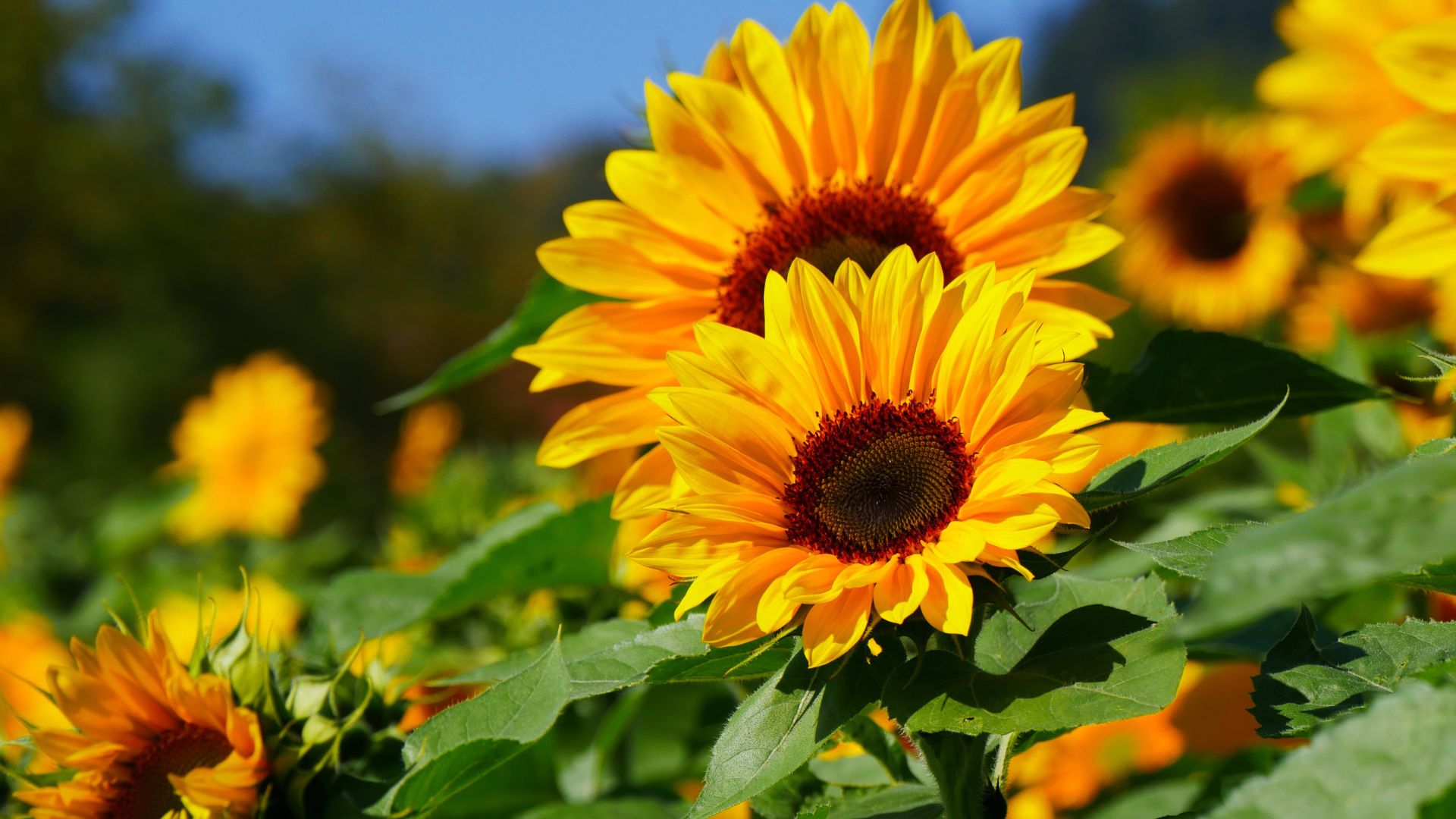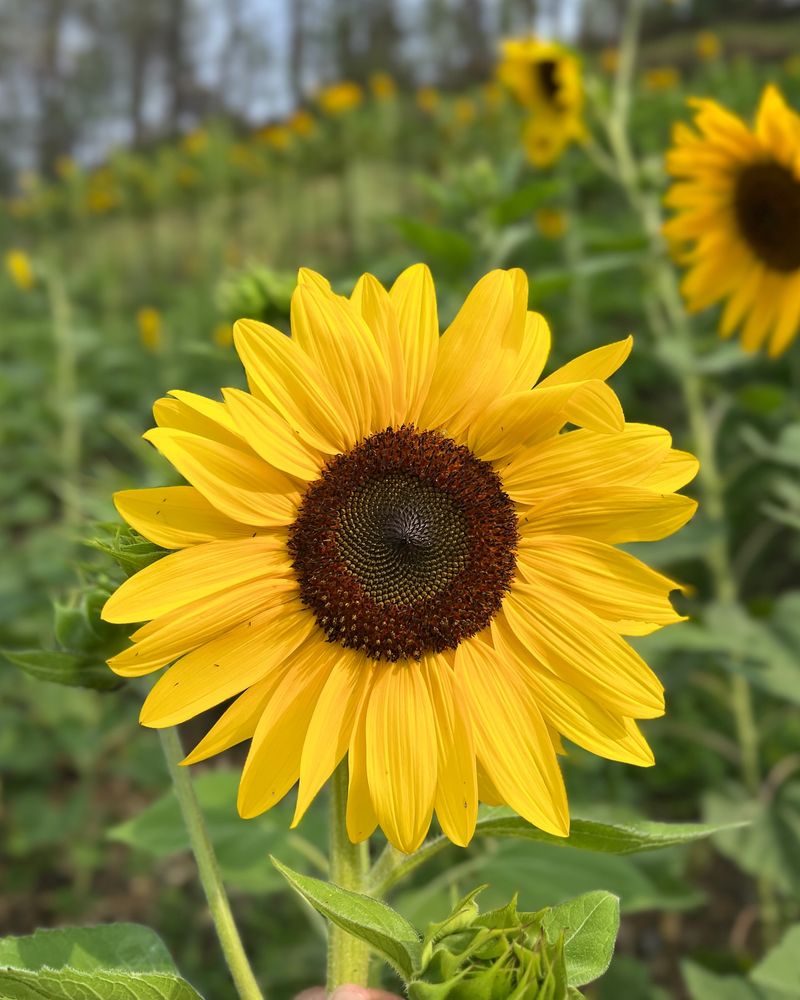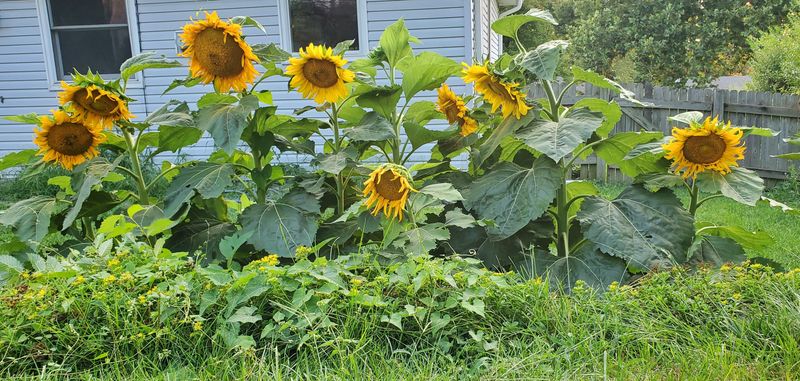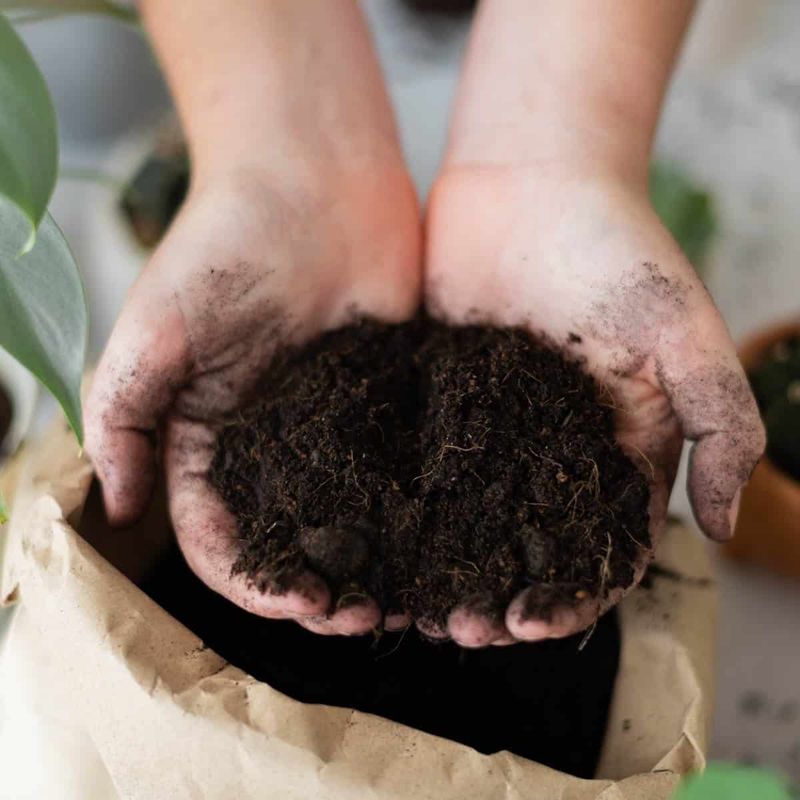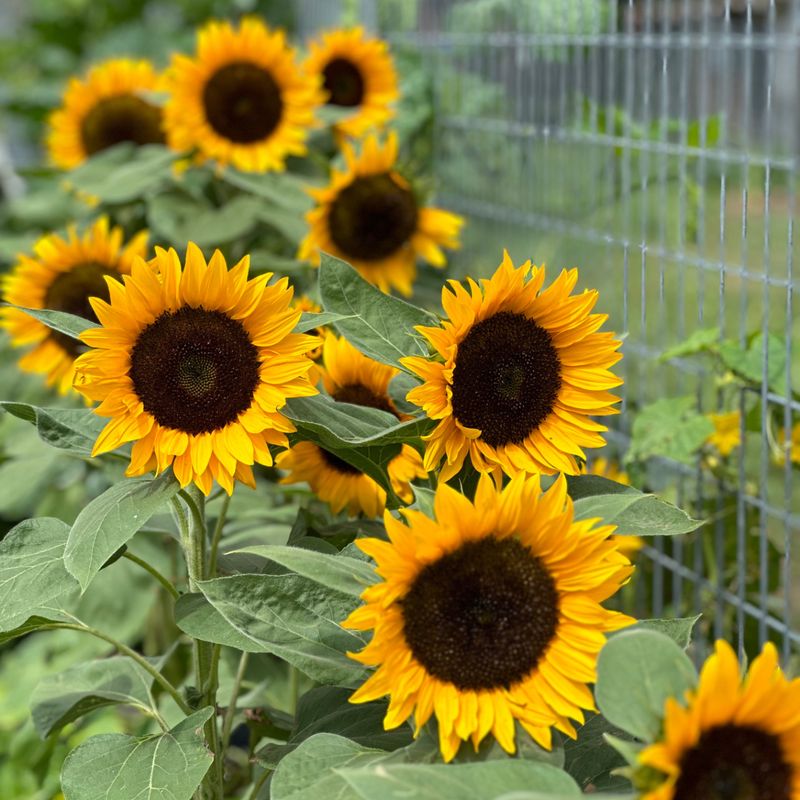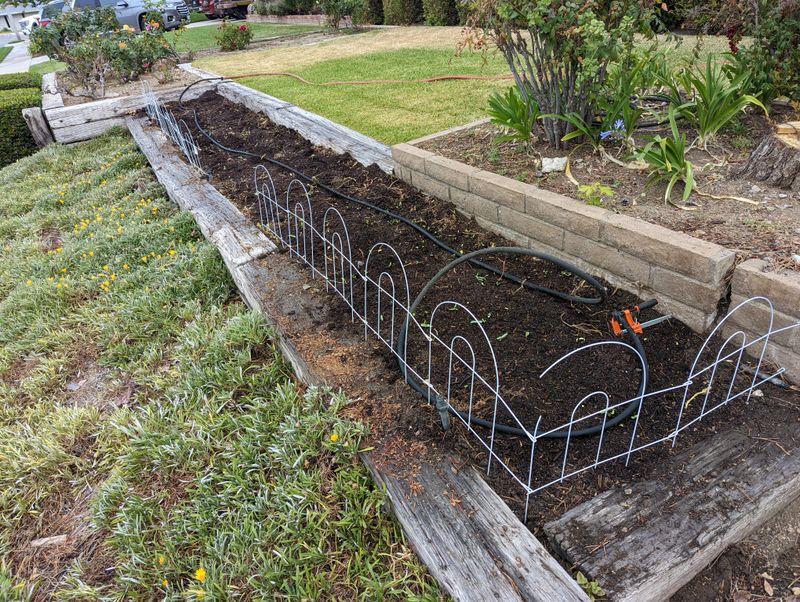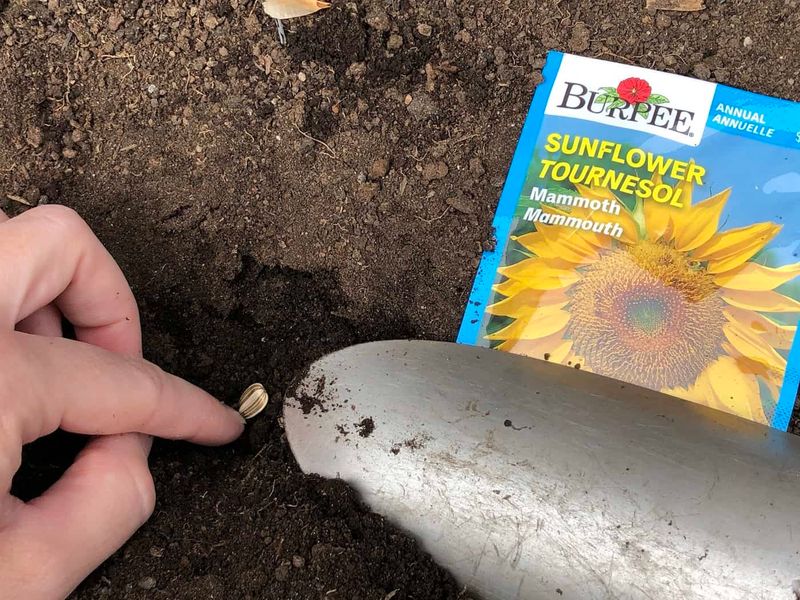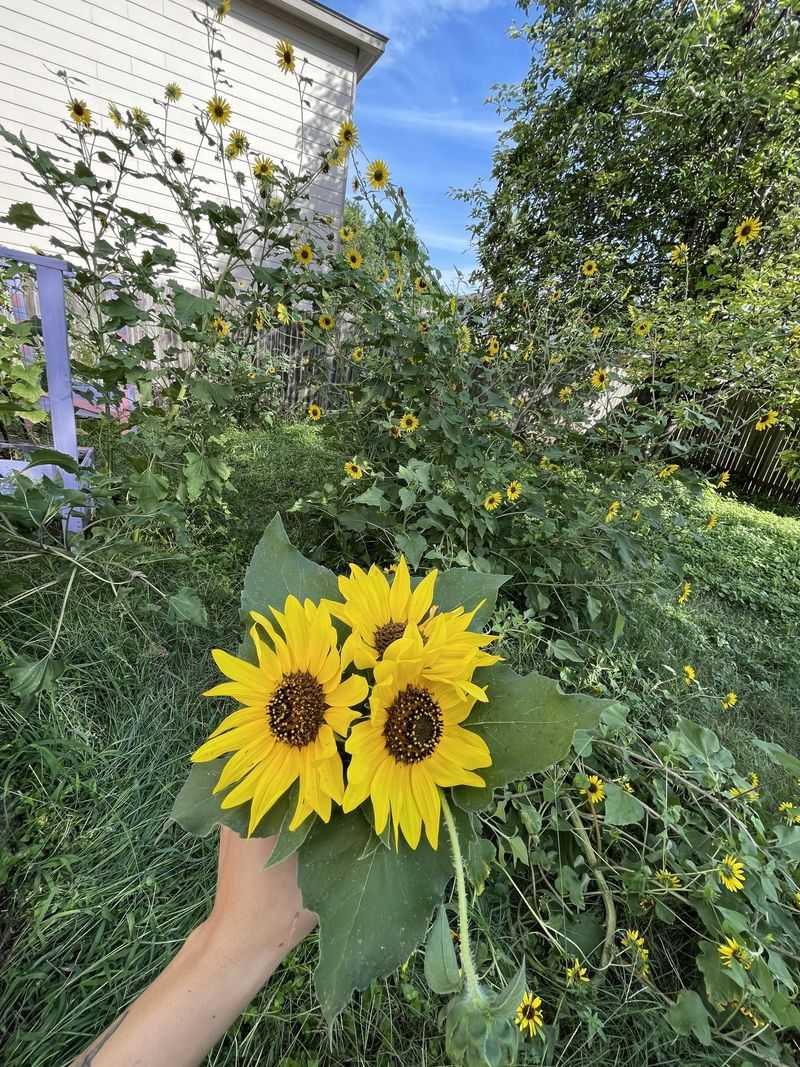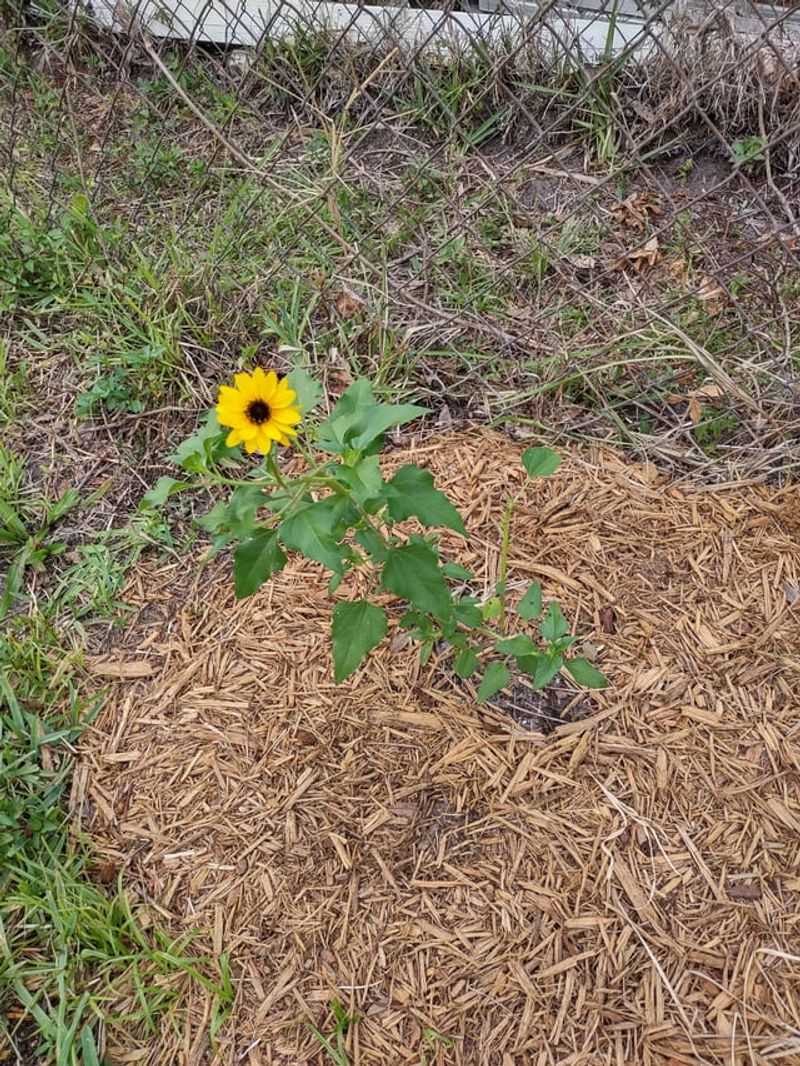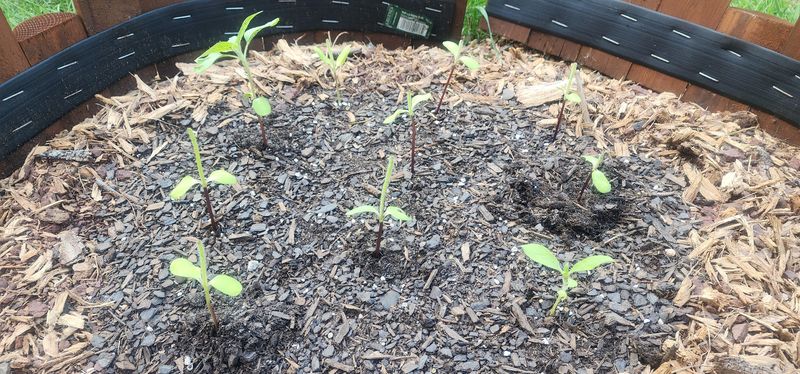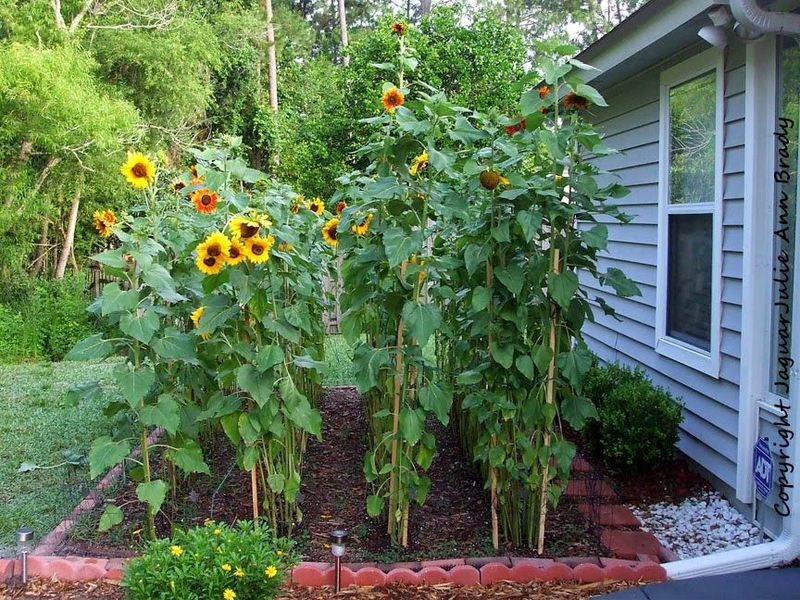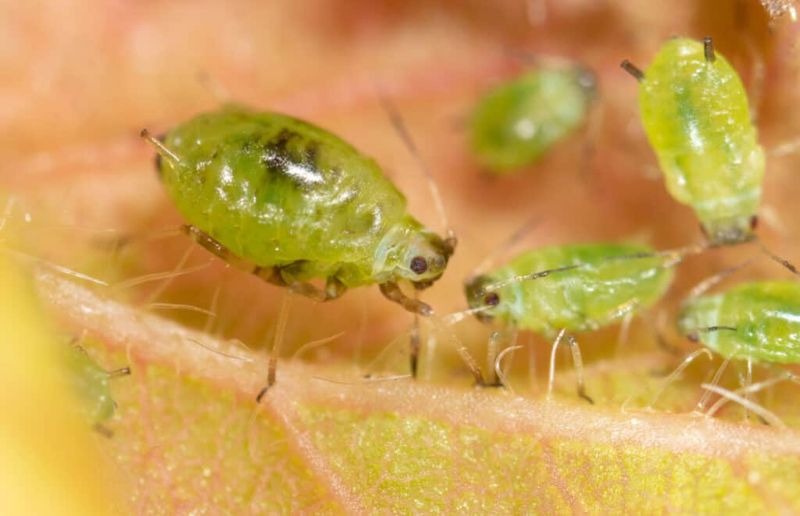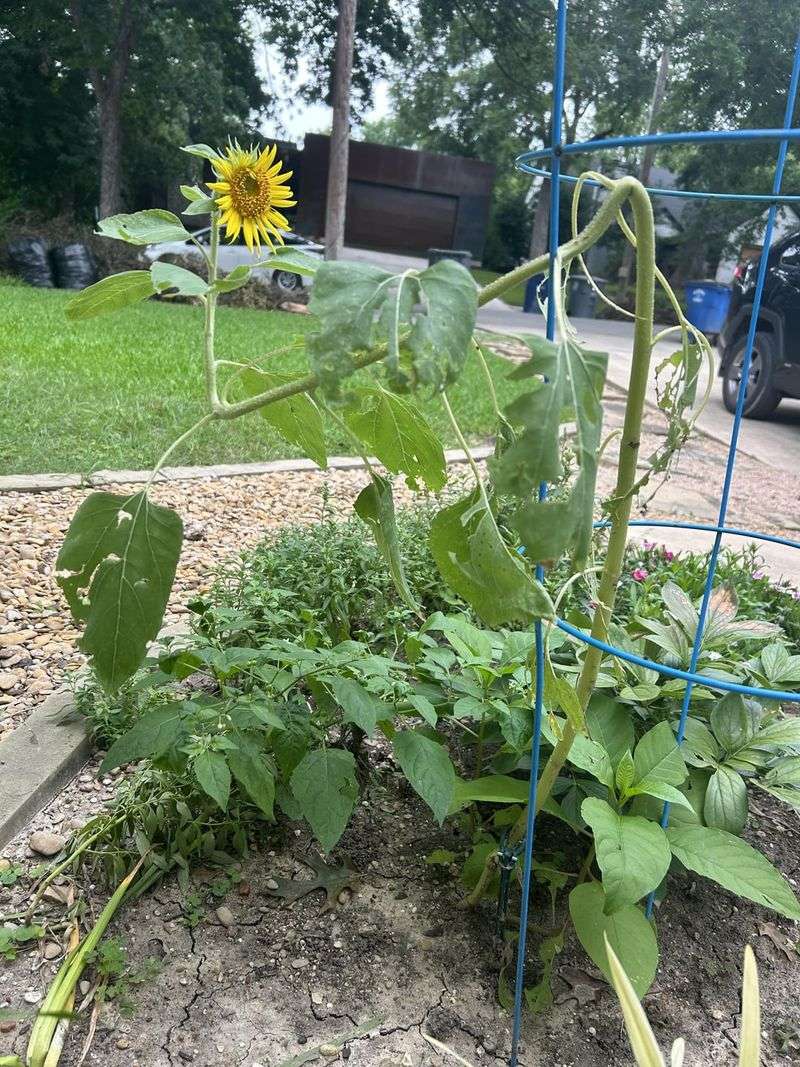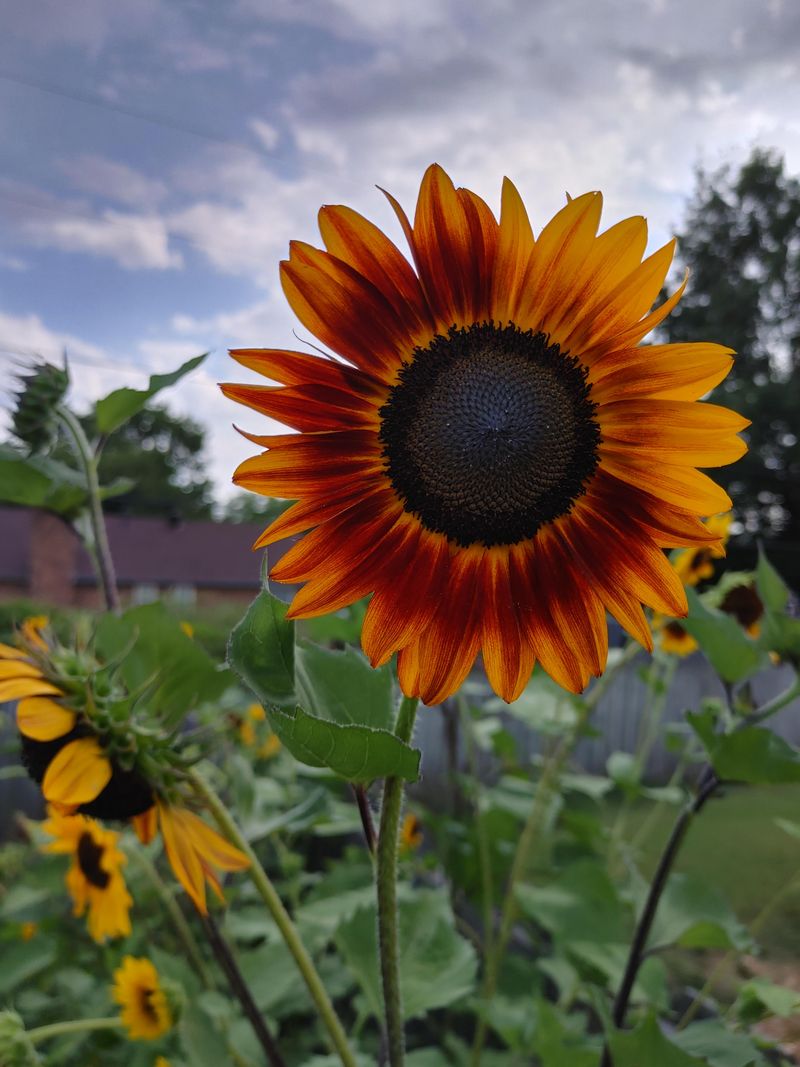Growing sunflowers from seed is pure joy—they rise like golden beacons, following the sun and turning your garden into a lively haven. Their cheerful blooms attract pollinators and spread warmth with every sway in the breeze. It’s hard not to smile when these giants come to life.
Whether you’re chasing towering heights or just healthy, vibrant plants, the right tips make all the difference. Sunflowers thrive with plenty of sunlight, well-drained soil, and just a touch of patience. Each seed holds the promise of something bold and beautiful.
With thoughtful care, these radiant blooms will stand tall and strong—proof of nature’s resilience and your nurturing touch. So grab your gloves, plant with intention, and get ready for a season of golden glory.
1. Choose The Right Variety
Not all sunflowers reach impressive heights! American Giant and Skyscraper varieties can grow up to 14 feet tall, while Russian Mammoth consistently reaches 9-12 feet.
For truly towering specimens, these varieties are your best bet. In my experience, Titan sunflowers have performed exceptionally well, even in less-than-ideal soil conditions.
The seed packet will indicate the expected mature height, so check before purchasing. Remember that some dwarf varieties only reach 2-3 feet, which might disappoint if you’re hoping for those impressive stalks that need staking.
2. Start With Quality Seeds
Fresh seeds produce the strongest plants. When purchasing, look for plump seeds without cracks or damage. The outer shell should be intact and free from mold spots or discoloration.
I’ve found that seeds from a reputable garden center generally have better germination rates than those from discount stores. You can also harvest and save seeds from last year’s plants if they weren’t hybrids.
Store unused seeds in a cool, dry place in an airtight container. Most sunflower seeds remain viable for 2-3 years when properly stored.
3. Pick The Perfect Planting Spot
Location makes all the difference for maximum height. Choose a spot that receives at least 6-8 hours of direct sunlight daily. Southern exposures typically offer the most consistent light throughout the day.
The ideal location should also be sheltered from strong winds that could damage tall stalks. Against a fence or wall works wonderfully as it provides both protection and support.
For the tallest plants, avoid areas where trees or buildings cast shadows during prime growing hours. Full sun exposure is absolutely essential for reaching those impressive heights.
4. Prepare Soil Properly
Sunflowers aren’t too fussy about soil, but they’ll reach their maximum potential in well-draining, nutrient-rich ground. Before planting, work the soil to a depth of at least 12 inches to accommodate their deep roots.
Adding compost improves both drainage and nutrition. For particularly poor soil, mix in some aged manure – but not too much, as excessive nitrogen can lead to weak stalks that topple easily.
The pH should be slightly acidic to neutral (6.0-7.5). A simple soil test can guide you if amendments are needed to reach the optimal range.
5. Plant At The Right Time
Timing is crucial for tall sunflowers. Plant after all danger of frost has passed and soil temperatures reach at least 55-60°F. In most regions, this means mid-spring to early summer.
I’ve learned through trial and error that sunflowers planted too early often struggle with cold soil and grow less vigorously. Waiting those extra few weeks really pays off with stronger seedlings.
For a continuous display, stagger your plantings every 2-3 weeks until midsummer. This succession planting ensures you’ll have beautiful blooms well into fall.
6. Space Seeds Correctly
Proper spacing allows sunflowers to develop strong stems and access ample nutrients. For giant varieties, plant seeds 24 inches apart in rows spaced 30-36 inches apart.
Crowding leads to competition for resources, resulting in spindly plants that won’t reach their height potential. Each plant needs its own territory to thrive and develop a sturdy support system.
When I’m aiming for record heights, I give my champion plants even more room – up to 3 feet between plants. The extra space allows for maximum root development and stronger stems.
7. Plant Seeds At Proper Depth
Planting depth affects germination success and early growth vigor. Push seeds approximately 1 inch deep into moist soil, then cover and gently firm the soil above them.
Deeper planting can delay emergence and weaken seedlings as they struggle to reach the surface. Seeds planted too shallow may dry out or be exposed by rain and wind.
For extra-large varieties, I sometimes plant 2-3 seeds per hole and thin to the strongest seedling once they’ve reached 6 inches tall. This selective approach helps ensure you’re growing only the most vigorous plants.
8. Water Deeply and Consistently
Establishing a proper watering routine encourages deep root growth. When seedlings first emerge, keep the soil consistently moist but not waterlogged. As plants grow taller, water less frequently but more deeply.
Deep watering encourages roots to grow downward, creating a stronger foundation for tall stalks. Aim to provide about 1 inch of water weekly, adjusting for rainfall and temperature.
During the critical period when flower heads are forming, consistent moisture becomes especially important. Water stress at this stage can significantly reduce both plant height and flower size.
9. Fertilize Strategically
Contrary to what you might expect, heavy fertilizing doesn’t always produce taller plants. Too much nitrogen creates lush foliage but weak stems that can’t support the weight of large flower heads.
For optimal height, apply a balanced fertilizer (10-10-10) when planting and again when buds begin to form. Focus on phosphorus and potassium for strong stems and roots rather than excess nitrogen.
I’ve had great success using compost tea every few weeks during the growing season. This gentle approach provides nutrients without the risk of over-fertilization that can lead to leggy, unstable growth.
10. Mulch To Conserve Moisture
A 2-3 inch layer of organic mulch helps maintain consistent soil moisture and suppresses competing weeds. Straw, shredded leaves, or wood chips work particularly well around sunflowers.
Keep mulch a few inches away from the stems to prevent rot and pest problems. As the mulch breaks down, it also adds valuable organic matter to the soil, improving its structure.
During summer heat waves, mulched plants typically outperform unmulched ones. The protective layer keeps roots cooler and reduces water stress that can stunt growth during critical development periods.
11. Protect Young Seedlings
Young sunflower seedlings face numerous threats from birds, squirrels, slugs, and insects. Until plants reach 12-18 inches tall, they’re particularly vulnerable and benefit from protection.
Simple cloches made from plastic bottles with the bottoms cut off work wonderfully. Row covers provide another effective option while still allowing light and water to reach the plants.
I’ve saved countless seedlings by sprinkling diatomaceous earth around plants to deter crawling pests. Once sunflowers develop their third or fourth set of true leaves, they become much more resilient to pest damage.
12. Stake Tall Varieties Early
Don’t wait until plants start leaning to provide support. Install stakes when sunflowers reach about 2 feet tall, before they develop heavy flower heads that can cause them to topple.
Use sturdy stakes at least 1-2 feet taller than the expected height of your variety. Bamboo or metal stakes work well for most home gardens, while extra-tall varieties might need stronger supports.
Secure plants to stakes using soft garden twine or plant ties, creating loose loops that won’t cut into the growing stems. Add additional ties as the plant gains height.
13. Remove Competing Weeds
Weeds compete for water, nutrients, and sunlight that your sunflowers need. Keep a 2-foot diameter around each plant completely weed-free, especially during the first 6-8 weeks of growth.
Hand pulling works best for established weeds near sunflower stems. For larger areas between rows, careful hoeing removes weeds without disturbing the sunflowers’ roots.
I’ve found that regular weeding sessions every 7-10 days make the task manageable. Just 10 minutes of maintenance prevents weeds from establishing and stealing resources that could otherwise fuel your sunflowers’ vertical growth.
14. Monitor And Manage Pests
Regular inspection helps catch pest problems before they affect growth. Check the undersides of leaves for aphids and the base of plants for cutworms, two common sunflower pests.
Beneficial insects like ladybugs and lacewings can keep aphid populations in check. For more serious infestations, a strong spray of water or insecticidal soap usually solves the problem without harsh chemicals.
Deer and rabbits find sunflower seedlings particularly tasty. If these animals visit your garden, protective fencing or repellents may be necessary until plants grow large enough to withstand occasional browsing.
15. Avoid Overhead Watering
Wet foliage increases disease risk, particularly powdery mildew and fungal leaf spots that can weaken plants. Water at the base of plants instead, keeping leaves dry and reducing potential problems.
Soaker hoses or drip irrigation systems deliver water directly to the roots where it’s needed most. These methods also conserve water by minimizing evaporation and runoff.
If you must use overhead watering, do it early in the morning so leaves have time to dry before evening. Morning watering gives plants all day to absorb moisture while minimizing disease-promoting dampness overnight.
16. Consider Companion Planting
Strategic neighbors can boost sunflower growth and health. Cucumber plants make excellent companions, as they help repel beetles that might otherwise damage sunflower seedlings.
Avoid planting potatoes and pole beans nearby. These crops can inhibit sunflower growth through chemical interactions in the soil or competition for the same nutrients.
I’ve had great success planting borage around my sunflowers. It attracts pollinators and beneficial insects that help protect the sunflowers from pests while improving overall garden health.
17. Harvest At The Right Time
Proper harvesting ensures you’ll have quality seeds for next year’s giants. Wait until the back of the flower head turns yellow-brown and the seeds are plump and fully formed.
Cut heads with about 12 inches of stem attached. Hang them upside down in a dry, well-ventilated area with a paper bag secured around the head to catch falling seeds.
For eating, harvest when the seeds begin to loosen from the head. For planting next season, allow seeds to fully dry on the plant until the back of the head turns brown and seeds can be easily removed by hand.

